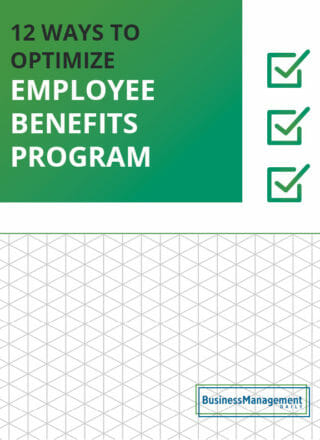The difference between employee engagement and job satisfaction
Maximizing workforce potential: Satisfaction and engagement combined
Are you under the impression that job satisfaction and employee engagement are the same things? While similar terms, important distinctions exist. Maximizing your workforce’s potential involves both. Especially in times of low unemployment and high turnover, keeping an eye on factors that promote employee job satisfaction is critical to retention.
But keeping positions filled is only part of the story. Successful business outcomes result when a high level of engagement leads employees to do their best work and truly care about company culture and growth.
Here’s an in-depth look at the difference between employee engagement and job satisfaction and the steps you can take to achieve both.
What is job satisfaction?
Employee satisfaction is contentment with one’s job. The worker finds the role sufficient based on the adequacy of factors such as pay, employee benefits, hours, location, flexibility, work-life balance, and job security.
Job satisfaction often leads to other types of satisfaction in one’s life, such as comfort in knowing a steady paycheck exists to pay the bills or that the short commute home leaves plenty of the evening free.
Satisfied workers keep turnover rates low; employers like it when employees are not looking for their next job. These staff members often meet basic requirements and score fine on performance reviews.
What is employee engagement?
Employee engagement deals with the level of commitment and passion workers bring to their position. These team members want to do their best so that the organization can prosper and grow. Their interest goes beyond the “what’s in it for me?” level. Engaged employees feel a sense of purpose and a connection to the greater picture.
Companies with engaged employees benefit in many ways. Motivated workers are often very productive, willing to go the extra mile, and helpful to those around them. They may offer useful suggestions and innovative ideas. They take the initiative to make the company better by going above and beyond.
Examples of satisfied employees and engaged employees
Seeing instances of the two concepts in action can assist with grasping their meanings and how both are important to a company’s bottom line.
Consider these four scenarios:
Scenario 1

Jack works in general merchandise at a big-box retailer. He receives a good paycheck, and the employee benefits program adequately covers his family’s health insurance needs.
He feels confident about job security, as several of his co-workers have been at their current jobs for five years or more. Jack does what his manager asks of him but hardly ever thinks about customer satisfaction or what actions might improve company profitability.
Analysis: Jack is a satisfied but disengaged employee.
Scenario 2
Julie runs the customer service counter at the same place. Like Jack, she considers her compensation better than what she has seen offered at similar jobs, and she particularly likes the benefits package because it includes partial tuition reimbursement.
Julie enjoys learning new things and takes advantage of all the development opportunities her employer offers. She also takes great pride in developing new and better ways to do things and happily volunteers to mentor new hires.
Analysis: Julie is both a satisfied and engaged employee.
Scenario 3
Allison is a one-person communication department at a small business. She loves the variety of tasks, and no day is ever dull. Allison knows her efforts truly make a difference to the company’s well-being, so she puts in a good deal of overtime.
Yet while Allison finds her role engaging and meaningful, she has a range of worries. Her paycheck covers monthly necessities but not much else.
The extra hours and effort she puts in often leave her too tired in the evening to do much else than watch television. Her LinkedIn connections keep telling her to find a position with better pay and work-life balance.
Analysis: Allison is an engaged employee but lacks job satisfaction.
Scenario 4
Doug works in an automotive dealership’s billing department. His days often drag because of the repetitive nature of his tasks. On employee engagement surveys, he used to offer suggestions on how to make the work environment more enjoyable.
Since nobody seemed to listen, he stopped trying to improve working conditions. The pay is mediocre, and perks are non-existent. Doug basically considers himself passing the time there until his wife finishes her graduate degree, and they can move closer to their extended family.
Analysis: Doug is disengaged and dissatisfied with his job.
Ways to increase levels of job satisfaction
As the examples illustrate, various factors contribute to job satisfaction. If you are looking to improve in this area, pay attention to the following:
Compensation
Money is a chief determinant of job satisfaction. Examine your pay scale. Is it competitive with similar companies in your area? Does it provide employees with a desirable standard of living? If insufficient, raising salaries can potentially trigger a noticeable boost in employee satisfaction and assist with retention.
Benefits
Analyze your benefits package, too. Things like medical insurance and a retirement plan give employees peace of mind. Perks such as on-site childcare and generous PTO assist in work-life balance, adding to the job’s attractiveness.
Flexibility
Consider offering choices about where and when work gets done. A job that offers the option to work from home, maintain a hybrid arrangement, or adjust schedules contributes to the quality of life employees crave.
Trust
Satisfaction increases when employees feel their employer has their best interests at heart. They rest easier about job security and do not always wait for the other shoe to drop. Be as transparent as possible with your team, communicate regularly, and prioritize respect.
Drivers of employee engagement
Looking to get your employees more passionate about the company and their role in it? Promote engagement through actions such as:
Investing in professional development
 Learning new things keeps a job fresh and interesting. Offering career development opportunities also shows that the organization views its employees as part of its long-term growth and success plans. You’re important to us today and will continue to be tomorrow.
Learning new things keeps a job fresh and interesting. Offering career development opportunities also shows that the organization views its employees as part of its long-term growth and success plans. You’re important to us today and will continue to be tomorrow.
Avoiding micromanagement
Encourage autonomy. Give workers the tools they need to do well and trust them to handle the details as they see fit. Taking responsibility boosts investment in outcomes.
Valuing innovation
Give the go-ahead for an employee to pursue a pet project – provided he keeps up with the responsibilities in his job description.
Conduct brainstorming sessions where staff members solve problems or come up with better ways to do things. Letting people know it is good to think outside the box allows their minds to soar.
Interacting with team members
Walk the floor. See what people are doing and what is on their minds. Ask for opinions. Leaders who engage with their workforce help individuals feel seen and heard. Encourage co-workers to talk to and help one another, too. Build a sense of community where people feel they belong and would be missed if not there.
Two other considerations
As you strive to improve overall well-being through greater job satisfaction and employee engagement, remember two important things that can affect both.
First, be liberal with appreciation and recognition. Workers want to know that their efforts matter. Praise, a small reward, or a genuine “thank you” goes a long way toward making people feel more positive about your company and their job in it.
Lastly, encourage your workers to get involved. What would improve their employee experience? Conduct regular satisfaction surveys. Talk one-on-one with disengaged employees for ideas on how to inspire more passion.
The act of asking contributes to morale, and following through with their suggestions is the icing on the well-being cake.






